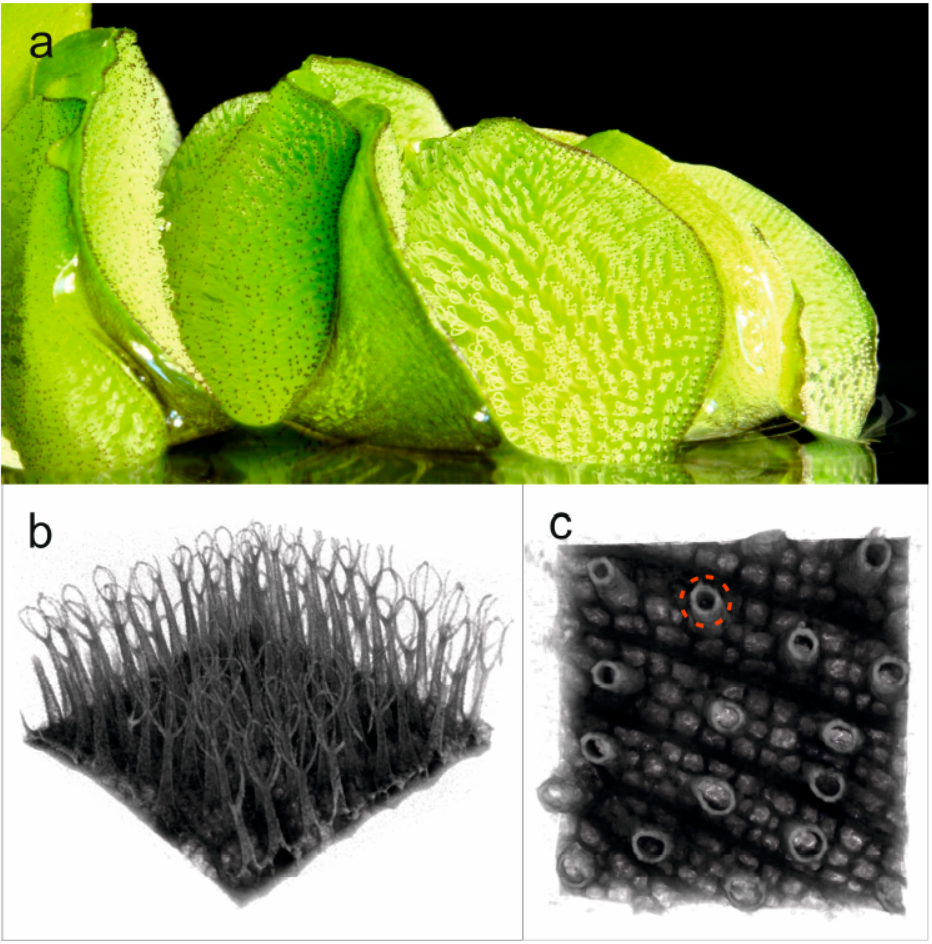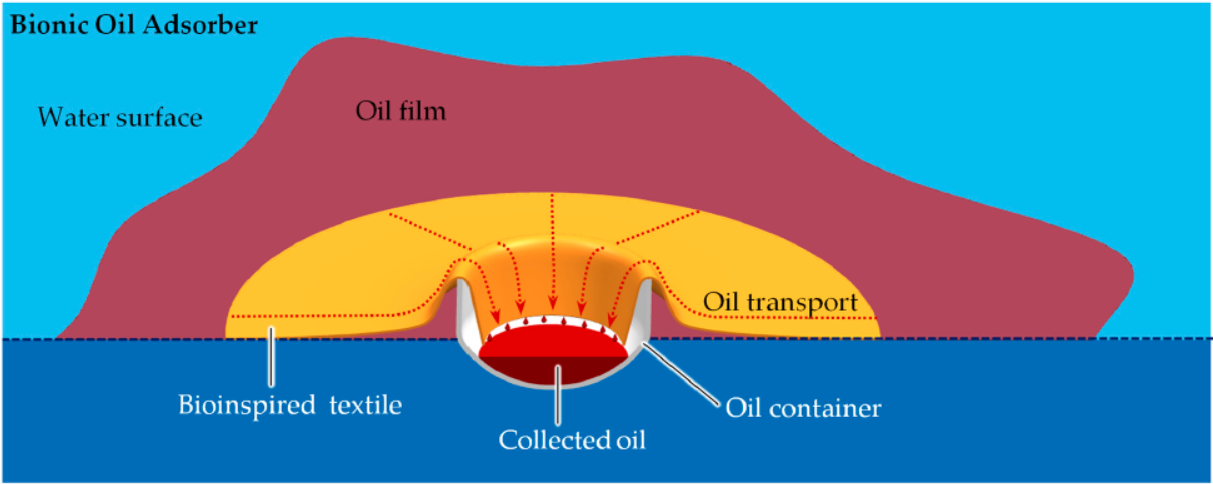Oil films on water are an increasingly major contamination problem worldwide. In 2020, the research group of Prof. Wilhelm Barthlott from University of Bonn, Germany published a novel adsorption and transportation technology for oil–water separation based on biological role models like the floating fern Salvinia. This application provides an unexpected ability for the fast and efficient removal of oil films, particularly in ecologically important freshwater biota. A single small Bionic Oil Adsorber (BOA) with 1 m2 functional textile can collect up to 4 L of oil per hour, which equals about 100 m2 of oil film from a water surface into a collecting vessel. This is a safe, fast, and sustainable solution for the ubiquitous contaminations of, e.g., fuel oil in freshwater environments. In the paper of "Self-Driven Sustainable Oil Separation fromWater Surfaces by Biomimetic Adsorbing and Transporting Materials", they further present updated, new experimental data, and a review of the literature published since.

Figure 1. Adsorption and transport of a crude oil droplet from a water surface by a leaf of Salvinia molesta. The oil is adsorbed completely within seconds.

Figure 2. (a) Salvinia molesta; the floating leaves of this floating fern show a most complex, hierarchically structured, superhydrophobic surface with excellent oil adsorption properties. (b) The section of a micro-CT scan of one of the Salvinia leaves shows the eggbeater-shaped surface structures in more detail. (c) A micro-CT cross-section parallel to the Salvinia leaf surface shows that the surface structures at the base can be approximated as circles (red dotted line), which was used for the 2D simulation of the oil adsorption and transport abilities on these surfaces.

Figure 3. Cross-section of computer-aided (CAD) model of the Bionic Oil Adsorber. The scheme shows an oil film (red) on a water surface (light blue). In the floating container (gray), the textile (orange) is fixed so that it is in contact with the oil film and the end protrudes into the container. The oil is adsorbed and transported by the BOA textile. As shown in the cross-section, it enters the container, where it is released again and accumulates at the bottom of the container.
This work was contributed by Leonie Beek 1 , Wilhelm Barthlott 2,* , Matthias Mail 3 , Kai Klopp 4 and Thomas Gries 1
1 Institut für Textiltechnik und Lehrstuhl für Textilmaschinenbau, RWTH Aachen University, Otto-Blumenthal-Str. 1, 52074 Aachen, Germany; leonie.beek@ita.rwth-aachen.de (L.B.); thomas.gries@ita.rwth-aachen.de (T.G.)
2 Nees Institute for Biodiversity of Plants, University of Bonn, Venusbergweg 22, 53115 Bonn, Germany
3 Karlsruhe Institute of Technology (KIT), Institute of Nanotechnology, Hermann-von-Helmholtz-Platz 1, 76344 Eggenstein-Leopoldshafen, Germany; matthias.mail@kit.edu
4 Heimbach GmbH, An Gut Nazareth 73, 52353 Düren, Germany; kai.klopp@heimbach.com
* Correspondence: barthlott@uni-bonn.de
and published on Separations 2023, 10, 592. https://doi.org/10.3390/separations10120592
Copyright © 2024 International Society of Bionic Engineering All Rights Reserved
吉ICP备11002416号-1









